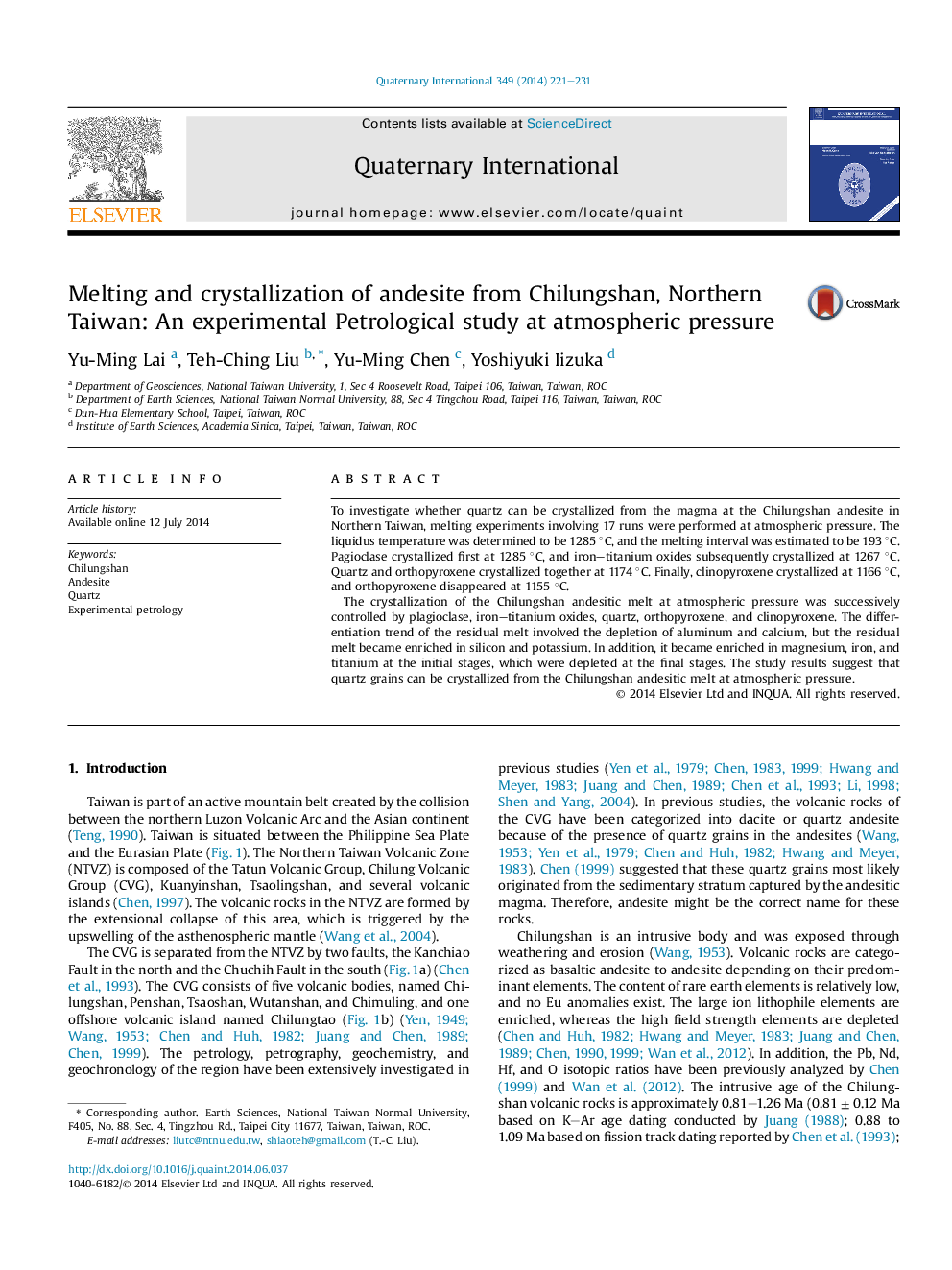| Article ID | Journal | Published Year | Pages | File Type |
|---|---|---|---|---|
| 1041128 | Quaternary International | 2014 | 11 Pages |
To investigate whether quartz can be crystallized from the magma at the Chilungshan andesite in Northern Taiwan, melting experiments involving 17 runs were performed at atmospheric pressure. The liquidus temperature was determined to be 1285 °C, and the melting interval was estimated to be 193 °C. Pagioclase crystallized first at 1285 °C, and iron–titanium oxides subsequently crystallized at 1267 °C. Quartz and orthopyroxene crystallized together at 1174 °C. Finally, clinopyroxene crystallized at 1166 °C, and orthopyroxene disappeared at 1155 °C.The crystallization of the Chilungshan andesitic melt at atmospheric pressure was successively controlled by plagioclase, iron–titanium oxides, quartz, orthopyroxene, and clinopyroxene. The differentiation trend of the residual melt involved the depletion of aluminum and calcium, but the residual melt became enriched in silicon and potassium. In addition, it became enriched in magnesium, iron, and titanium at the initial stages, which were depleted at the final stages. The study results suggest that quartz grains can be crystallized from the Chilungshan andesitic melt at atmospheric pressure.
